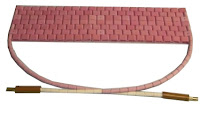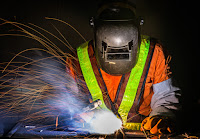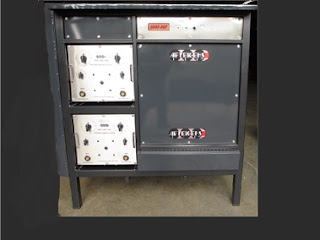 |
| Some welding operations require postweld heat treatment |
There are numerous welding methods, as well as specific procedures that are applicable to different metal alloys and intended use of the finished product. Some of these procedures involve controlled heating and/or cooling of the weld and the closely adjacent area of the parts being joined. This is generally termed heat treatment, and more specifically, preheating and postweld heat treatment.
Heat treatment, in any form, is a time consuming and costly operation. Strength, toughness, corrosion resistance, and residual stress of the joint are all impacted by the proper application of heat treatment. Many application codes and standards require specific protocols for heat treating, which is utilized to achieve a specific resulting condition in the subject material or to restore material characteristics altered by production processes such as welding.
Stress relief is a benefit and goal of postweld heat treatment. During the welding process, base materials near the weldment, deposited weld metal, and the heat affected zones exhibit different levels of metallurgical phase transformation. Various degrees of material hardening occurs, particularly in the heat affected zone adjacent to the weld metal deposit, with high stresses due to melting and solidification. Stress relief through heat treatment is accomplished by controlled heating and cooling of the affected material area to relieve a significant amount of the imposed stresses. This postweld heat treatment can reduce the hardness and increase ductility, lessening the incidence of cracking in weldments. The process generally involves maintaining the target area at a specific temperature (soaking), then executing a controlled cooling schedule.
One respected source, TWI, sums up post weld heat treatment (PWHT).....
The necessity for PWHT depends on the material and the service requirements. Other factors that influence the need for PWHT are the welding parameters and the likely mechanism of failure. In some standards, PWHT is mandatory for certain grades or thicknesses, but where there is an option, cost and potential adverse effects need to be balanced against possible benefits. The energy costs are generally significant due to the high temperatures and long times involved, but costs associated with time delays may be more important. Detrimental effects include distortion, temper embrittlement, over-softening and reheat cracking, which means that control of heating and cooling rates, holding temperature tolerances and the times at temperature are extremely important, and must be carefully controlled in order to realise the full benefit of the process.
The precise level of heat control, as well as the substantial quantity of heat, required to successfully accomplish a PWHT protocol calls for the use of special purpose equipment intended for PWHT. Hotfoil EHS is a recognized manufacturer of industrial application heating equipment and specializes in the design and manufacture of power consoles, ceramic mat heaters, and accessories for pre and post-weld heat treatment. Share your application challenges with them and work together to develop a cost effective solution.










